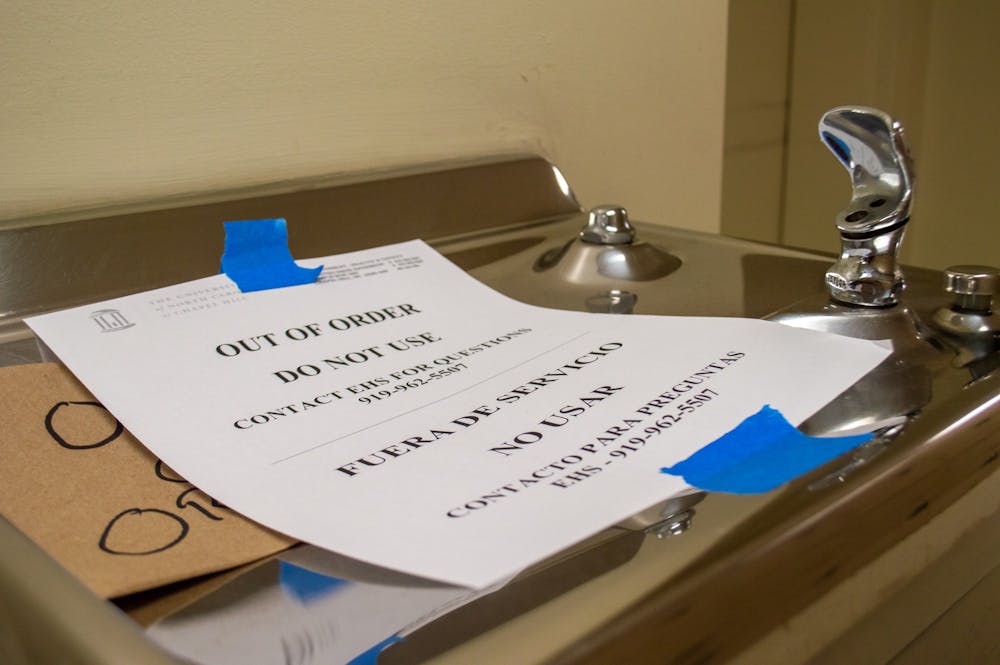There are currently 64 University buildings with water fixtures that have yet to be remediated or replaced due to lead contamination, according to the testing webpage by UNC Environment, Health and Safety.
The fixture with the highest detected amount of lead is located on the eighth floor of the Brinkhous-Bullitt Building — home to Pathology and Laboratory Medicine. The water fountain was measured at 1,100 parts per billion of lead on Nov. 15, 2022 and has since been taped off.
Within the last year, detectable levels of lead were discovered in at least one fixture of 125 buildings on UNC’s campus.
The Centers for Disease Control and Prevention states that immediate corrective action must be taken on water fixtures at or above 15 ppb. The N.C. General Assembly passed a law lowering the standard to 10 ppb for drinking water consumed by children in 2021, but the CDC said the maximum contaminant level goal is zero.
Current affected campus fixtures include bottle fillers, drinking fountains, ice makers, sinks, water dispensers and other water filler systems.
Methods for removing lead in water include reverse osmosis, distillation and activated carbon filtration, which are used on fixtures with lower ratios of lead. Many fixtures have been fully replaced with new plumbing systems or placed as out of service.
UNC Media Relations said in an email statement that remediation for the Brinkhous-Bullitt Building will take longer because there is already a separate project in place to replace a section of piping in the building unrelated to the lead issue.
"The separate piping project in Brinkhous-Bulitt will replace outgoing wastewater piping," Media Relations said. "The water fountain drain line connects to this piping, so the fixture cannot be replaced until the pipe replacement project is completed."



